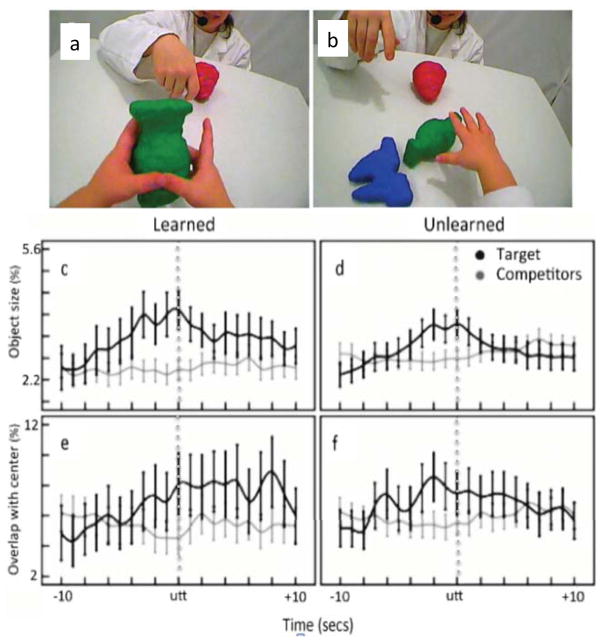Figure 3.
Results from head-camera studies linking visual size and centering of a named object to learning. Panels a and b show examples head-camera images during two naming moments when later testing showed the child had learned the name (a) and not learned the name (b). Panels c and d show the image size (% pixels) of the named target object (black) and the mean of the other in-view, competitor objects (gray) for the 20-second window around the naming utterance (utt) for naming moments that led to the learning of the object name (c) or did not (d). Panels e and f show the overlap of the image of the named target (black) and the mean overlap of the images of the competitor objects (gray) with the center of the head-camera image for the 20-s window around the naming utterance (utt) for naming moments that led to the learning of the object name (e) or did not (f). See Yu and Smith (2012) and Pereira, Smith, and Yu (2013) for technical details and related graphs. Error bars represent standard errors.

